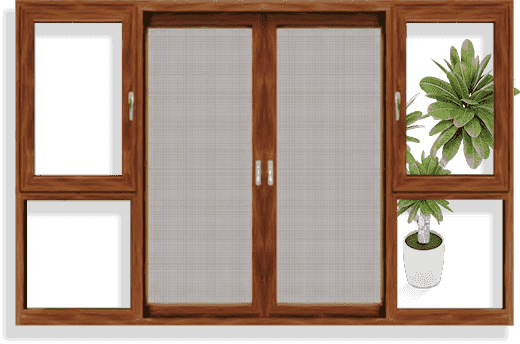Aluminum windows are windows that are made with frames constructed from aluminum. Aluminum is a lightweight, strong and durable metal that is resistant to corrosion, making it an ideal material for window frames. Aluminum window frames are typically more affordable than other materials such as wood or fiberglass, and they require very little maintenance. They are also very versatile in terms of design, and can be easily customized to fit different sizes and shapes.
Aluminum windows are commonly used in both residential and commercial buildings. They can be found in a variety of styles, including single or double-hung, casement, awning, sliding, and fixed. Some aluminum windows are designed with thermal breaks, which are insulating barriers that help to reduce heat transfer and improve energy efficiency. Additionally, aluminum windows can be painted or anodized in a variety of colors and finishes, making them a popular choice for modern and contemporary buildings.
What are the characteristics of aluminum window?
Aluminum windows have several characteristics that make them popular in both residential and commercial buildings. Some of the main characteristics of aluminum windows include:
Durability: Aluminum is a strong and durable material that can withstand extreme weather conditions and temperature changes, making it an ideal choice for window frames.
Low maintenance: Aluminum windows are resistant to rust, rot, and corrosion, and they require minimal maintenance. They can be easily cleaned with soap and water and do not need to be painted.
Lightweight: Aluminum is a lightweight material, making it easy to install and transport.
Design flexibility: Aluminum windows are available in a variety of styles, shapes, and colors, allowing for customization to suit different architectural styles and personal preferences.
Energy efficiency: Aluminum windows can be designed with thermal breaks, which reduce heat transfer and help to lower energy costs.
Security: Aluminum windows can be fitted with security features such as locks and laminated glass to increase protection against break-ins.
Environmentally friendly: Aluminum is a highly recyclable material, making it an eco-friendly choice for window frames.
Production process of aluminum window:
The production process of aluminum windows typically involves the following steps:
Design: The first step in producing an aluminum window is to design it. This involves determining the dimensions of the window, the type of glass to be used, and the configuration of the frame.
Cutting: Once the design has been finalized, the aluminum extrusions are cut to the required length using a saw. The cuts are precise and clean to ensure a perfect fit.
Assembly: The next step is to assemble the frame. The aluminum extrusions are joined together using screws or corner brackets. The corners are then welded together to ensure a strong and secure frame.
Glazing: The glass is then cut to size and installed into the frame. The glass is held in place using glazing beads or silicone sealant.
Quality Control: Before the window is shipped out, it goes through a thorough quality control process. This involves checking the frame for any defects, ensuring that the glass is secure, and making sure that all hardware is functioning properly.
Packaging and Shipping: Finally, the windows are packaged and shipped to the customer. They are carefully packed to prevent any damage during transit.

 简体中文
简体中文 English
English




























